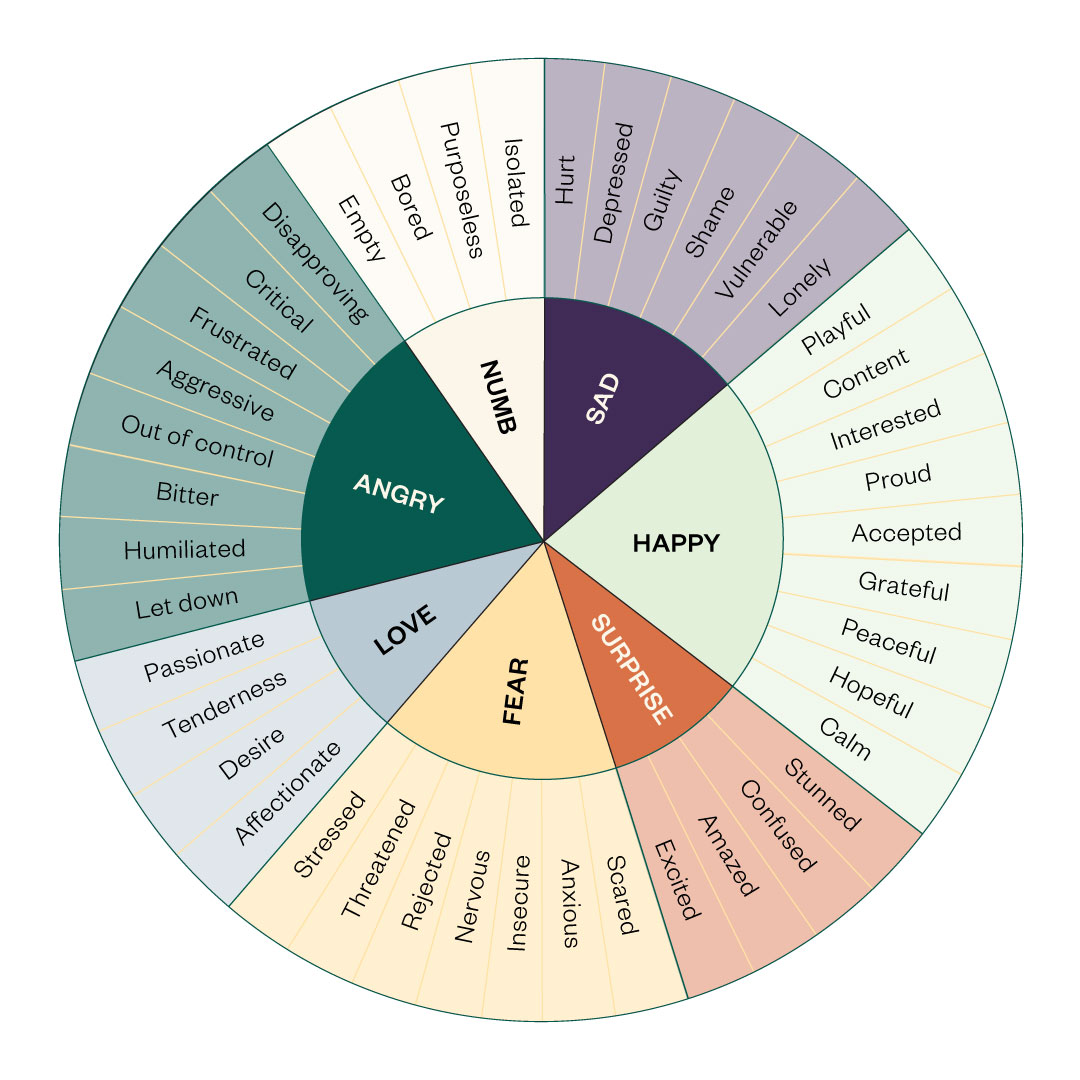
Saprea Support Groups > Group Materials >Coping Skills—Part 1
Group Activity

Emotion Wheel
Oftentimes, the coping skills we use are driven by our emotions. Every emotion provides insight on how we feel, as well as what we need. But how can we be more aware of what emotions we are experiencing in any given moment?
A tool that many survivors find helpful is an Emotion Wheel. This wheel helps you to identify and better understand the emotion (or emotions) you’re experiencing. Identifying our emotions is an important step in recognizing what our needs are and what behaviors we can employ to fulfill those needs. Once you understand the emotions that arise for you in certain situations—such as when you feel pushed toward the edge of your window of tolerance—you can take steps to tend to your emotional needs with helpful coping skills.
Activity steps
01
Using the emotion wheel, identify a difficult emotion that you’ve experienced recently. Start by looking at the middle of the wheel to identify the core emotion you felt during that experience. Were you angry? Afraid? Sad? Numb? What did you experience physically? Trembling hands? A rush of heat to your face? A heavy weight in your stomach?
02
From there, move to the outer part of the wheel and observe the feelings associated with that emotion. Don’t necessarily look for an emotion. Rather, take note of which emotions resonate with you. You aren’t trying to “fix” or change your emotions, only become more aware of them.
03
Now, based on the emotion(s) you’ve identified, what was your need in that moment or situation? For instance, if you were experiencing feelings of rejection, then perhaps what you needed most was acceptance and belonging. Or, if you were feeling shame, your emotional need may have been self-compassion and curiosity.
For more examples, to the side is a list of common emotional needs that survivors of child sexual abuse may experience. If one of these examples resonates with you, we encourage you to write it down, along with a suggested activity you could try to help tend to that need in the future.
04
Reflect and consider repeating these steps in the future. As you return to the emotion wheel again and again, it will become easier for you to:
- Identify the emotions you commonly experience.
- Assess what need(s) you have in response to those emotions.
- Choose an activity that will help you tend to that emotional need.
Over time and with consistent practice, these intentional choices can become go-to coping skills you employ again and again.
Emotional Needs and Suggested Activities
Self-Compassion and Curiosity
- Challenge a shameful/unhelpful thought with a Mindfulness exercise.
- Imagine a friend in your situation and write a compassionate note to them.
Safety and Support
- Practice the butterfly hug or another grounding exercise.
- Set or brainstorm a boundary.
Hope
- Recite positive affirmations.
- Write a message from your future self.
Physical Movement
- Try progressive muscle relaxation or stretching.
- Go for a short walk outside while observing all your body has allowed you to accomplish today.
Acceptance and Belonging
- Attend a support group.
- Express your thoughts and feelings to a person you trust.
example
Grounding Exercise
Butterfly Hug
Activity Steps
01
02
03
04
05
Video Option
Hosting Your Meetings Off-Line? Download All of the Materials You Need Here:
Additional Resources
Done With This Topic? Jump to the Next.

Healthy Connections

Power of Play—Part 1

